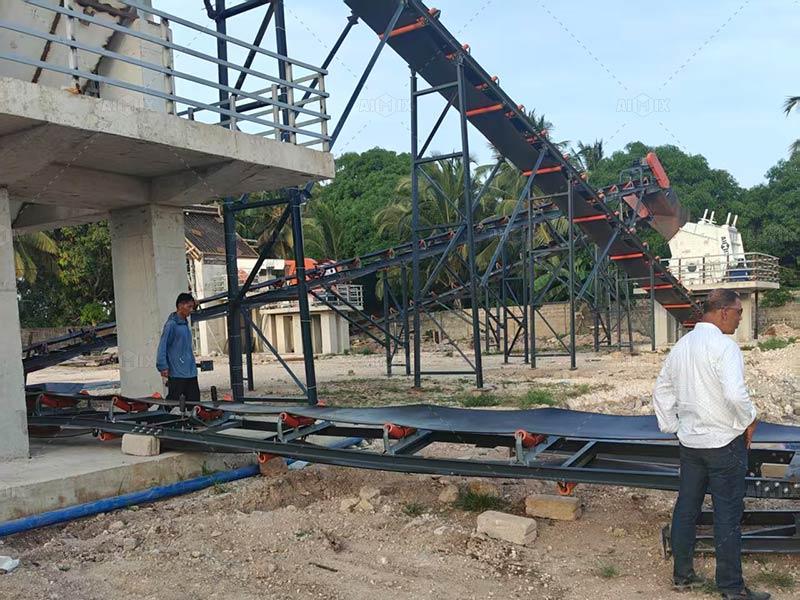From Rocks to Roads: How Aggregate Crushers Build the World Around Us

Look around—highways, airports, bridges, industrial parks—they all have one unassuming origin: crushed rock. Beneath the asphalt, under the concrete, and embedded in every modern construction lies the invisible backbone of infrastructure—aggregate. But aggregates don’t just fall from the sky in perfectly sized pieces. That’s where aggregate crusher come in, breaking down massive rocks into the essential materials that form the skeleton of our cities and the veins of our logistics networks. Without these machines, we’d still be stuck in the mud—literally.
The importance of aggregate crushers isn’t sexy, but it’s foundational. These machines shape raw geology into functional forms that power economies. In a world obsessed with sleek skyscrapers and cutting-edge transit, we ignore the crude, heavy-duty heroes that make it all possible. Let’s break it down—piece by gravelly piece.
The Birth of Infrastructure Begins with a Bang
Big Rocks Are Useless
Massive boulders look impressive on mountaintops, but try pouring them into a foundation form or paving a road with them and you'll quickly realize their limitations. Untamed rock is unpredictable and unusable in construction unless it’s processed. That’s the job of aggregate crushers—to take nature’s irregular monoliths and turn them into engineered precision.

Crushers don’t just reduce size. They impose order. A jaw crusher starts the chaos control, pulverizing large stones into more manageable chunks. Cone crushers refine it further. Impact crushers? They give it that final finesse. The result: calibrated aggregates, sorted by size, type, and intended use. Without this gradation, structural reliability goes out the window. Quite literally.
The Backbone of Every Build
You’ll find crushed aggregate in every layer of a construction project—from sub-bases that resist frost heave to surface layers that handle the grind of 18-wheelers. Aggregates form the compression layer in concrete, the traction layer in asphalt, and the drainage layer in infrastructure. Without them, buildings would sink, roads would crack, and airport runways would disintegrate after the first season.
It’s not hyperbole to say that every mile of road begins with a crusher. These machines aren’t just breaking rock. They’re forging the load-bearing materials that determine whether infrastructure lasts five years or fifty.
Technology Meets Toughness
Precision Engineering in a Dusty World
Aggregate crushers aren’t medieval torture devices. Modern ones are feats of mechanical ingenuity—loaded with automation, monitoring sensors, and energy-efficient drives. While the environment they work in is punishing, their operation is exacting. Feed rates, crushing ratios, product shapes—all are fine-tuned in real time.
The technology behind these machines reduces waste, increases output, and ensures that the product meets strict construction standards. That’s not just good engineering. That’s essential economics. A misgraded batch of aggregate can derail an entire build, cause legal headaches, and compromise safety.

Durability That Pays Dividends
These machines aren’t cheap. But they earn their keep. A reliable crusher reduces downtime, minimizes maintenance costs, and maximizes uptime—three things that construction crews and project managers obsess over. Manufacturers now design crushers with replaceable liners, automated lubrication systems, and real-time diagnostics. These aren’t luxuries—they’re requirements in high-volume operations.
A well-maintained crusher isn’t just a cost saver. It’s a project enabler. One that works through dust storms, torrential rain, and operator fatigue, chewing through rock as if geology were a minor inconvenience.
More Than Just a Machine
Environmental Considerations Are Non-Negotiable
Gone are the days when crushing was a dirty, noisy, regulation-dodging side operation. Today’s aggregate producers must meet strict environmental mandates. That means dust suppression, noise control, water recycling, and carbon impact reporting. Fortunately, many modern mobile crusher integrate systems to meet those demands—without sacrificing productivity.
From mobile crushers designed to reduce transport emissions to electric-powered units that minimize fossil fuel use, sustainability is no longer optional. It’s the new baseline. Crushers that can’t adapt to green expectations will be left in the dust—literally and politically.
Shaping the Built World
Every sidewalk, every tunnel, every dam—if it’s built, it started with crushed rock. Aggregate crushers are the unsung sculptors of civilization. They don’t get awards. They don’t make headlines. But their output shapes everything from our commutes to our communications.
The next time your tires glide smoothly over a highway or your building doesn’t shake during a storm, thank the heavy machinery that crushed the bedrock beneath it. Because without them, construction would still be stuck in the Stone Age.
Post Your Ad Here